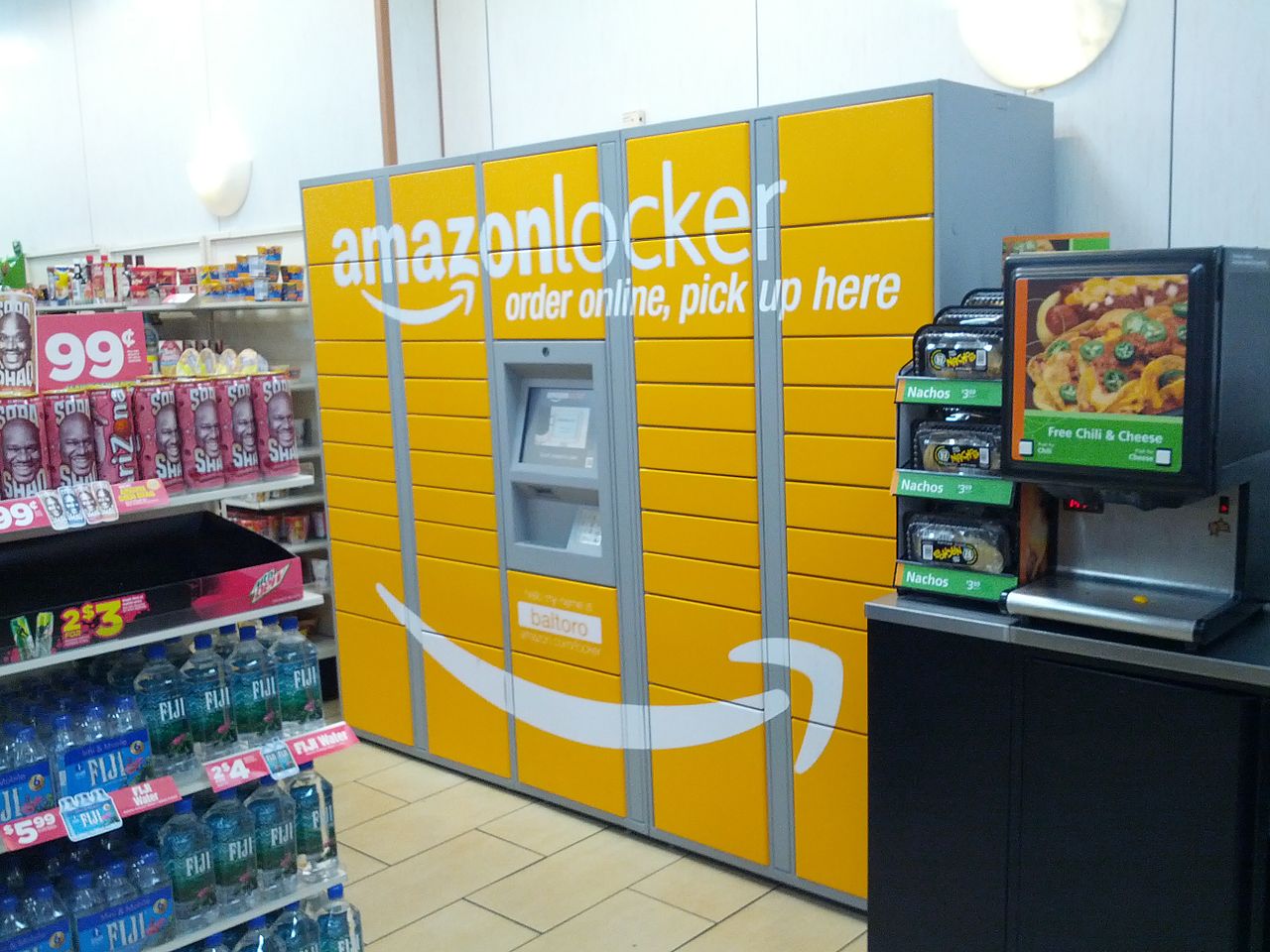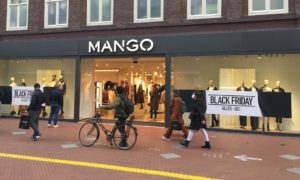Longtime American expats long ago learned to do without easy access to U.S. brands and food, either going native and shopping at European stores, or having friends send them care packages.
That’s changing rapidly with e-Commerce and international fulfillment. Now, Seattle-based Amazon is doubling down in Europe literally, with two new initiatives. Both are designed to leverage Amazon’s fulfillment architecture across the continent, both in its warehouses footprint and in its technological advantage over European imitators such as Rocket Internet’s Zalando.
The internet giant apparently is experiment with the Amazon Locker as well as grocery delivery … one of the areas where European apps such as Delivery Hero have bet heavily.
 AMAZON LOCKER COMING TO EUROPE
AMAZON LOCKER COMING TO EUROPE
Amazon.com, which has been chipping away at trying to dominate the European e-commerce market, has announced a new gambit that may provide some welcome familiarity to American consumers living abroad. Reuters has reported that Amazon has “posted several job adverts in recent weeks that suggest it wants a broader range of pick-up options, including lockers, in continental Europe.”
The new jobs include business development manager roles for Amazon Locker in Munich and Paris, European Union technical operations manager for Locker based in Luxembourg, and network development manager roles in Luxembourg, Munich and Paris, according to Reuters and to the Amazon jobs recruitment site. Ads state that Amazon will roll out Amazon Locker and other delivery solutions. In Germany, Amazon’s No. 2 market behind the United Kingdom, orders are delivered to homes, to lockers owned by Germany’s Deutsche Post or to stores serviced by the Hermes logistics firm.
The locker pick-up strategy has worked successfully in the United States and United Kingdom for Amazon – self-service boxes in centralized locations such as shopping centers and strip malls where customers can key in a code to access their packages.
The locker approach helps Amazon control shipping costs, critical to a company whose pricing strategy depends on very thin margins. Fulfillment shipments to Europe have been especially costly, though that’s only one hurdle Amazon has faced in its attempt to replicate overseas the phenomenal success it has had in the U.S. In the past year, Amazon has encountered regulatory hurdles in several European countries over taxation, competition and privacy.
According to the Reuters post:
In Germany, Amazon’s second biggest market, orders are either delivered to homes or to lockers owned by Germany’s Deutsche Post. The new jobs include business development manager roles for Amazon Locker in Munich and Paris, European Union technical operations manager for Locker based in Luxembourg, and network development manager roles in Luxembourg, Munich and Paris.
In late 2015, Amazon opened a parcel sorting center outside of Munich, with plans for more near other big German cities. The pressure for faster and also cheaper delivery – what the industry calls the “last mile” portion of delivery – has become more costly for Amazon. It’s usually the most expensive stretch of the package’s journey. Amazon has been fighting to reduce its dependence on traditional package delivery services, even experimenting with drones and a delivery service similar to the Über model, along with obtaining use of jet planes and cargo vessels.
Nonetheless, Amazon recently reported that its net-shipping costs reached an all-time high of $1.85 billion during the fourth quarter of 2015. For the full year, according to Reuters, “Amazon’s shipping costs grew more than 18 percent in 2015.”
 AMAZON COULD BE ADDING FOOD DELIVERY IN THE UK
AMAZON COULD BE ADDING FOOD DELIVERY IN THE UK
While its continental strategy focuses on locker pick-ups, Amazon is also angling to become the food pantry for online consumers in Great Britain. It has teamed up with Morrisons, the UK’s fourth-largest grocery chain, to deliver fresh and frozen goods – in some places, it promises, as quickly as under one hour. But to do that, the logistics pioneer needs to figure out exactly how to keep fresh produce at the right temperature. In parts of the U.S., Amazon Fresh trucks already deliver food and regular parcels together, and the company is starting to locate temperature-controlled warehouses for food next to or near to non-food storage.
That means Amazon needs to get shoppers to add higher margin non-food items to their fruit and vegetable orders. (Better still would be to have customers pick up the orders themselves from a store or from one of Amazon’s growing locker locations. But that seems to counteract the sit-at- home efficiency that has been key to Amazon’s success.)
It’s a potentially profitable challenge for Amazon to figure out. The UK online grocery market is predicted to double, to nearly $24 billion during the next five years, according to industry research group IGD.
Amazon has already been expanding its “Pantry” offering of packaged groceries, for its Prime subscribers, and is expected to eventually extend its U.S. Fresh service, which offers about 20,000 chilled, frozen and perishable products, not only throughout the UK but into and across the continent.
European market analysts say it could target every part of the retail sector, from big weekly shopping trips to buying bread, milk and vegetables. The deal with Morrisons is Amazon’s biggest foray into the food delivery business outside the United States. Britain is one of the world’s most advanced markets for grocery e-commerce. But it has taken pioneers like Tesco and Ocado decades to reach break even.
Still, hard to bet against Jeff Bezos.





























